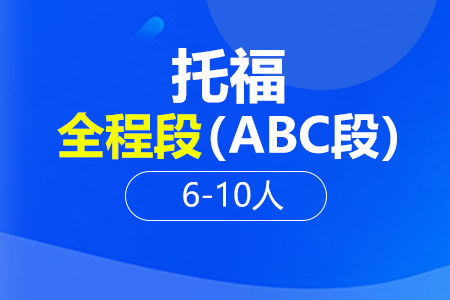托福阅读常考话题及练习题推荐三:动物行为变化(2)
1托福阅读常考话题:动物行为变化练习题
Paragraph 1: A conspicuous sign indicating the presence of white-tailed deer in a woodlot is a buck rub. A male deer makes a buck rub by striping the bark (outer layer) of a small tree with its antlers. When completed, the buck rub is an obvious visual signal to us and presumable to other deer in the area. A rub is usually located at the shoulder height of a deer (one meter or less above the ground) on a smooth-barked, small-diameter (16-25 millimeters) tree. The smooth bark of small red maples makes this species ideal for buck rubs in the forests of the mid-eastern United States.
1. The word “conspicuous” in the passage is closest in meaning to
A. noticeable
B. common
C. strange
D. particular
2.According to paragraph 1, why are small red maple trees ideal for buck rubs?
A. They have smooth bark.
B. They are found in the mid-eastern United States.
C. They grow very slowly.
D. They tend to grow in open spaces.
Paragraph 3: Buck rubs also have a scent produced by glands in the foreheads of deer that is transferred to the tree when the rub is made. These odors make buck rubs an important means of olfactory communication between deer. The importance of olfactory communication (using odors to communicate) in the way of life of deer was documented by a study of captive adult male deer a few decades ago, which noted that males rubbed their foreheads on branches and twigs, especially as autumn approached. A decade later another study reported that adult male white-tailed deer exhibited forehead rubbing just before and during the rut. It was found that when a white-tailed buck makes a rub, it moves both antlers and forehead glands along the small tree in a vertical direction. This forehead rubbing behavior coincides with a high level of glandular activity in the modified scent glands found on the foreheads of male deer; the glandular activity causes the forehead pelage (hairy covering) of adult males to be distinctly darker than in females or younger males.
3.The studies of forehead rubbing by deer described in paragraph 3 showed that
A. forehead rubbing encourages the growth of antlers
B. mule deer and white-tailed deer behave differently during the rut.
C. the rut can occur at different times of the year
D. deer convey important information through scent
4. The word “exhibited” in the passage is closest in meaning to
A. relied on
B. increased
C. displayed
D. preferred
Paragraph 4: Forehead rubbing by male deer on buck rubs presumably sends a great deal of information to other members of the same species. First, the chemicals deposited on the rub provide information on the individual identity of an animal; no two mammals produce the same scent. For instance, as we all know, dogs recognize each other via smell. Second, because only male deer rub, the buck rub and its associated chemicals indicate the sex of the deer producing the rub. Third, older, more dominant bucks produce more buck rubs and probably deposit more glandular secretions on a given rub. Thus the presence of many well-marked rubs is indicative of older, higher-status males being in the general vicinity rather than simply being a crude measure of relative deer abundance in a given area. The information conveyed by the olfactory signals on a buck rub make it the social equivalent of some auditory signals in other deer species, such as trumpeting by bull elk.
5.Why does the author mention that “dogs recognize each other via smell”?
A. To point out the similarities between dogs and deer
B. To argue that animals communicate through scent rather than through vision
C. To support the claim that the scent of a buck rub serves to identify its maker to other deer
D. To suggest that buck rubs can be detected by other species
6. The word “crude” in the passage is closest in meaning to
A. rough
B. useful
C. necessary
D. obvious
7.What can be inferred from paragraph 4 about the trumpeting of bull elk?
A. Trumpeting by higher-status bull elk signals their presence to other members of their species.
B. Bull elk need to combine trumpeting with olfactory signals to convey information about their identity.
C. Trumpeting alerts white-tailed deer to the presence of bull elk in their vicinity.
D. Trumpeting provides a better measure of deer presence in a given area than buck rubs do.
8.According to paragraph 4, the buck rubs occurring in a given area reveal all of the following information about deer EXCEPT
A. the individual identity of the deer
B. the gender of the deer
C. the likely social status of the deer
D. the number of deer in the vicinity
Paragraph 5: Because both sexes of white-tailed respond to buck rubs by smelling and licking them, rubs may serve a very important additional function. Fresher buck rubs (less than two days old), in particular, are visited more frequently by adult females than older rubs. In view of this behavior it has been suggested that chemicals present in fresh buck rubs may help physiologically induce and synchronize fertility in females that visit these rubs. This would be an obvious advantage to wide-ranging deer, especially to a socially dominant buck when courting several adult females during the autumn rut. Another visual signal produced by while-tailed deer is termed a buck scrape. Scrapes consist of a clearing (about 0.5 meter in diameter) and shallow depression made by pushing aside the leaves covering the ground; after making the scrape, the deer typically urinates in the depression. Thus, like a buck rub, a scrape is both a visual and an olfactory signal. Buck scrapes are generally created after leaf-fall in autumn, which is just before or during the rut. Scrapes are usually placed in open or conspicuous places, such as along a deer trail. Most are made by older males, although females and younger males (2.5 years old or less) occasionally make scrapes.
9. The word “induce” in the passage is closest in meaning to
A. increase
B. extend
C. delay
D. stimulate
10.According to paragraph 5, which of the following is true about chemicals in buck rubs?
A. They have to be at least two days old for females to be able to detect them.
B. They are more effective in older buck rubs than in fresher ones.
C. They may affect fertility in female deer.
D. They can be more easily detected by young males than adult females.
11. The word “termed” in the passage is closest in meaning to
A. associated with
B. visible as
C. known as
D. provided by
12.According to the passage, in what way do buck scrapes differ from buck rubs?
A. Buck scrapes are made by both male and female deer.
B. Buck scrapes are purely visual signals.
C. Buck scrapes are made closer to the breeding season than buck rubs.
D. Buck scrapes can be smelled only by deer.








